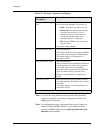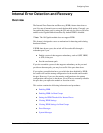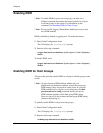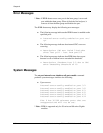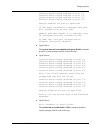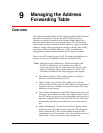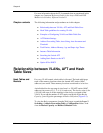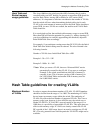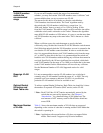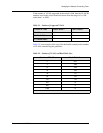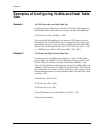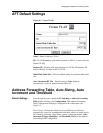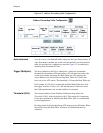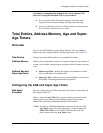
9-2 User Guide for the Avaya P580 and P882 Multiservice Switches, v6.1
Chapter 9
For more information about the CLI commands that are mentioned in this
chapter, see Command Reference Guide for the Avaya P580 and P882
Multiservice Switches, Software Version 6.1
Chapter contents The following information and procedures are in this chapter.
■ Relationship between VLANs, AFT and Hash Table Sizes
■ Hash Table guidelines for creating VLANs
■ Examples of Configuring VLANs and Hash Table Size
■ AFT Default Settings
■ Address Forwarding Table, Auto-Sizing, Auto Increment and
Threshold
■ Total Entries, Address Memory, Age and Super-Age Timers
■ Instance Table Information
■ Searching the Switch AFT
■ Adding Static Entries to the AFT
■ Option 82 for DHCP
Relationship between VLANs, AFT and Hash
Table Sizes
Hash Tables and
Buckets
For every VLAN created, a hash table is allocated. The hash table keeps
track of the memory locations where the learned AFT entries (MAC
addresses) are stored. These memory locations are referred to as buckets.
An individual bucket can range in size from 1 to 128 AFT entries (MAC
addresses) in powers of 2 (1, 2, 4, 8, 16, and so on). The bucket capacity for
a VLAN is the sum of all the capacities of the buckets assigned to that
VLAN. If you add the number of AFT entries and divide by the Bucket
Capacity, you will get the percentage of Bucket Utilization (Figure 9-2).
To view the Bucket parameters from the Web Agent, expand the Layer 2
Switching > Address Forwarding Table > Configuration folders. And
view the Bucket Capacity and Bucket Utilization fields.



